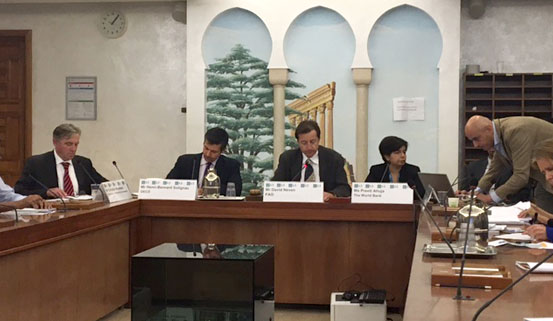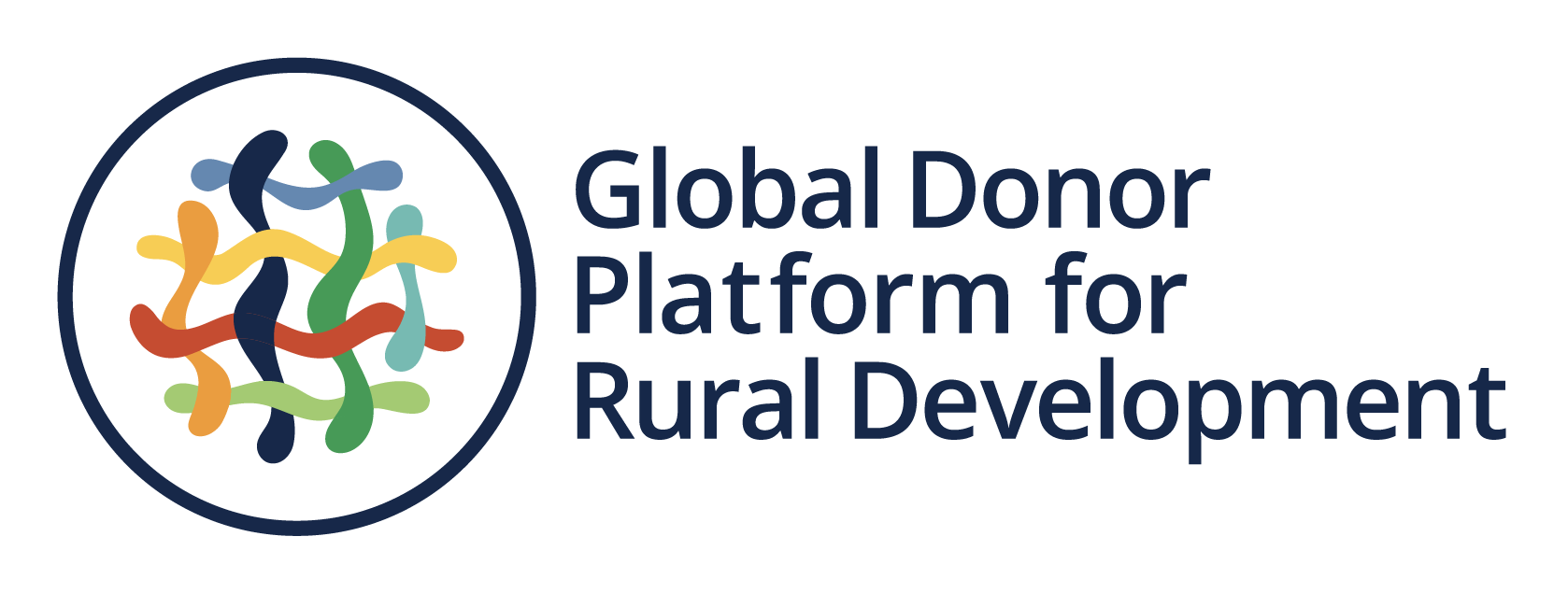Rome, Italy – 18 October 2016
The World Bank, FAO, IFAD and the Global Donor Platform for Rural Development invited to a side-event at the CFS named “Policies for Effective Rural Transformation, Agricultural and Food System Transition”. The participants discussed the changing structure of food systems and the possible ways to measure and analyse the performance of the agricultural sector.
Links

David Neven from FAO stressed in his opening remarks the growing importance of the sector and its linking role through every other economic sector. But he also warned the participants that there are major global factors that will greatly affect the sector and the overall food systems in the near future. The same factors will define the speed of rural development and the direction of the process of rural transformation. He urged policy makers to understand that this process entails a fast shift of economy development resources from the rural areas to urban areas that needs to be addressed soon. Transformation in rural areas used to take 100 years, as experienced by the OECD countries. Now the effects of rural transformation in developing and middle-income countries are visible only after 10-20 years. Additionally the process has changed in nature. In the past, it automatically meant that the manufacturing sector will overshadow agriculture, but in the current process, the agricultural sector is rather gaining importance. These new dynamics require a different approach that pays attention to the value addition of food products, to the ever growing demand for food and last but not least require investments that will take into account this broader context.
IFAD Rural Development Report: Inclusive Rural Transformation
The report concludes that:
- The process of rural transformation as part of the broader process of structural transformation transmits the positive and negative effects of the latter to the rural areas;
- It is an ongoing process that does not automatically lead to positive developments;
- The research shows that there is evidence supporting the hypothesis that faster change of non-agricultural GDP, ergo structural transformation, does not mean decline of rural poverty. But there is clear correlation between reduce of rural poverty and development of the agricultural sector;
- An important issue remains that politics depend on the level of structural transformation, they need to respond to the different national rural transformation paths, while taking the importance of agriculture into consideration.
Rui Benfica presented the outcomes of the Rural Development Report of IFAD. This report focuses not only on rural poverty, as previous reports did, but rather on the whole process of rural development and on the new dynamics of rural transformation. The report identifies the SDGs as a pathway for rural transformation, but also cautions that they can also present an additional development challenge. To better guide through and monitor the transformation in rural areas, the authors of the report measure rural transformation as the change of share of the non-agricultural sector to GDP. They also measure social inclusion as a rate of extreme rural poverty. The report goes on to state that rural-urban gaps will continue to persist, independent of all the structural transformation that is ongoing. This mostly affects the people living in rural areas, home to the majority of poor people that rely on agriculture. The authors conclude that base on these facts the importance of the agricultural sector as driver of transformation and source of opportunities in the rural areas will only increase. Additional important factor that the authors of the report identified is the uneven development of the manufacturing sector. When the transformation in Asian countries meant that manufacturing is going to exponentially develop and completely overtake agriculture, the current situation in developing countries is quite different. The manufacturing sector is stuck, there are no additional employment possibilities and at the same time the agriculture’s share in GDP is declining, leaving many of the poor people without a choice. The report sees an opportunity to break this cycle by focusing on the role of the broader food system. The growing demand for food and the growing share of economy of the food and beverage sector, presents an opportunity to strategically place agriculture and transfer the benefits of structural transformation through agriculture to the rural areas and the most vulnerable.
OECD: New Development Report
Henri-Bernard Solignac, from OECD, presented the recently published “New rural development paradigm” and the joint initiative of OECD, FAO, UNCDF on territorial approaches for food and nutrition security.
In both publications, the authors agree that rural areas are not going anywhere. In fact the number of people living in rural areas will continue to grow and this will put an additional pressure on policy makers to create opportunities for the youth. In this case agriculture on its own will probably not be enough. These conditions have caused the creation of a new vision of development politics, a shift from subsidies to more investments, from agriculture to manufacturing, from top-down governance to participatory approaches. No matter the changes, OECD is of the opinion that governance will continue to matter tremendously in guiding the rural transformation and in broader terms the rural development. The process is though so different nowadays, that there is not one key factor that will decide the outcomes – whether the focus is on governance or on the rural-urban linkages and the development and prosperity of small, medium and large cities, a new approach will be indeed required.
World Bank new institutional focus
Preeti Ahuja from the World Bank focused her presentation on the need to create jobs in the new context. Future projects will have to take several factors into account – climate-smart agriculture, supporting prosperous livelihoods and creating jobs, investing in inclusive agribusiness, while aiming at food and nutrition security – all cross-cutting issues mentioned in many of the SDGs. Another challenge presents itself at projects planning stage, where decision-makers can only design polices and strategies based on estimations of possible intervention effects in 2030. The World Bank is clear that estimations are made with current technology and they cannot possibly take into account the technology available in the future. So there is a dual challenge that donors are facing – ensure quantity and quality of jobs in rural areas in an uncertain and complex framework.
A number of vulnerable people is engaged in agriculture, but there is a strong push to migrate, millions of people are displaced, most of them previously being engaged in agriculture. Agriculture and food has the best leverage point in picking up these people, lifting them out of poverty. The sector impacts rural livelihoods upstream and downstream and can be utilised as a driver of change. To achieve these catalysing effects, donor programming needs to position itself in a system that looks at an integrated chain of agriculture, not treating the sector in a narrow silo, but in a much broader way.
With the global rise of demand for food and beverages, there is a great potential to grow the agribusiness GDP share in the economy, which at the moment is extremely low. This creates a chance to develop and increase SME impact. Furthermore the share of employment in farming and in the broader food system is expected to rise significantly. These opportunities need to be taken into consideration by policy decision makers, a systematic approach will have to be developed that moves SMEs from informality to formality and address vulnerable populations.
Global Donor Platform for Rural Development
Following a discussion that has taken place in the Global Donor Platform for Rural Development, there are several types of donors that can be identified based on their response to the universality and complexity call of the Agenda 2030 and the process of rural transformation. There are donors that are stepping up in their engagement, donors that focus on investment in private sector and a third type that focuses on trade. The third group brought about a shift in thinking – from working with development countries to working with economic partners. A fourth group of donors is putting vision into action, as the US did, by passing the food security bill. A sign that governance and political leadership still have great influence on domestic policy making and resource allocation. In other multilateral donors, such as WTO, one of the most important forums regarding trade with developing countries, agriculture and food security are not even discussed.
Donors are clear that the economy development in rural areas is currently rather unsustainable and unhealthy. Consumers are mostly left out of the development system thinking. Participants in the event agreed that consumer education will be of great value, next to the targeted support of private sector, civil society and finance organisations. With the food and beverage sector being worth 65 billion, the food systems importance for development is now undeniable. This places nutrition at the center of rural transformation, economic development and SDGs implementation. With the system-wide approach towards rural areas and the influence of all the factors described above, a change in food systems is expected to happen. Focus on nutrition will ensure that these new systems are not only economically viable but also healthy and sustainable. In this scenario regional integration’s will be of great importance.
Research shows that urban investments into agriculture are increasing, but there is a capacity gap between necessity for innovation and the capacity to deliver on coordinated systematic approaches of public policy.
